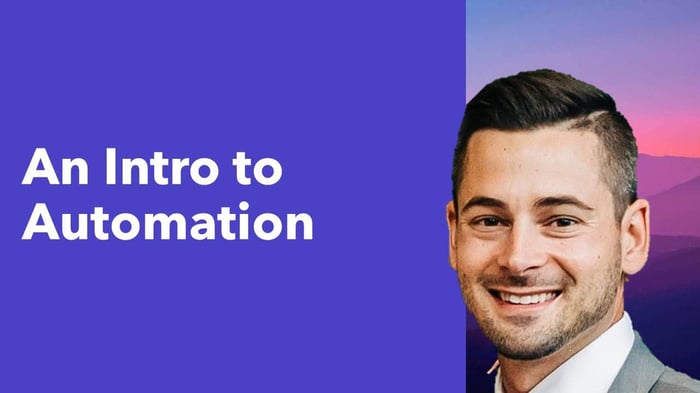This issue is brought to you by Thinkific, the platform I've used to help generate over 6 figures in passive income, so I can vouch for it personally.
Thinkific is user-friendly, has a great web-design platform, and most importantly lets you keep your student data (some other sites don't).
Today we're just talking intro, but I believe every Finance Solopreneur needs to be thinking about a passive income product, and Thinkific is my favorite platform to do so. Take the complexity out of course creation and check it out today.
Note: this post may contain affiliate links, which means if you make a purchase using one of my links I may earn a small commission, but it's at no extra cost to you and helps me keep this series free, so it's a win-win.
Intro
Ah yes, automation. The holy grail.
Who doesn't want to "earn money while you sleep?"
You see these headlines all the time, "Last year I made $700,000 doing these 5 things."
These alluring one-liners are designed to bring us in and convince us that by following a "simple system," we too can collect money while we sleep and achieve illustrious financial independence.
While I can plainly say it's just not that simple, I can definitely attest that it's possible.
I'll explain...
What is Passive Income?
Simply put, "passive income" refers to putting in a lot of work upfront (like creating an online course), with the goal of selling it in perpetuity without much follow-on work other than maintenance.
There are several ways to earn passive income, such as:
- Dividend income from stocks or mutual funds
- Income from rental properties
- Interest income from savings accounts, certificates of deposit, or bonds
- Royalty income from intellectual property, such as copyrighted works or patented inventions
- Income from businesses that you own but do not operate yourself
- Income from digital products or services that can be sold online
- Income from a rented room in your house or leased out space in your garage
- Income from a blog or website and monetized with advertising or affiliate revenue
The approach I like the most for finance professionals? A digital product or service that can be sold online, like a course.
Why do I say this? It allows us to show our expertise and build trust, two skills which are critical for a finance professional.
So Where do You Start?
Remember a few issues ago when I talked about posting daily on LinkedIn to start broadcasting your expertise?
How's that going? What kind of feedback are you getting?
If you're seeing some consistent responses or questions, then you're onto something.
What you're trying to identify are repeatable problems in your niche that you are good at solving.
Also, have you started reaching out to potential clients (even if they're family or friends)?
You want to be listening for the same kind of problems.
A couple examples:
- Do several people struggle with forecasting cash? Maybe you're a whiz at building simple cash flow forecasts that you can turn into a template.
- Or, are a few companies trying to raise bank debt but don't know what to prepare? Maybe you can compile a guide.
What seems obvious to you, someone else is willing to pay for. So keep that in mind.
The long term goal here is to create a passive income product that will help support you during slower times.
For now, just take some notes and see if you can spot a pattern.
Why Not Just Dive in Yet?
The hard part about course creation isn't the course itself, it's the marketing.
You've got to find a way to put the word out or no one will know all your hard work even exists.
And right now we're just starting with basic self-promotion on social media.
Down the road we'll talk:
- Audience building
- Email newsletters
- Blogs & SEO
- PPC
- Podcasts
- HARO
For now, let's walk before we run.
Action Items
Start actively listening for "problem patterns."
Ideally, these are problems that you can solve quickly (in an hour or two).
Write them down and keep a log of ideas.
Then craft some of your social media posts about your solution and see what kind of response you get.
If you can't tell by now, social media is your "testing ground" for all the products and services you eventually may offer.
Keep at it and follow the results.
That's it for today. See you next time.
—Chris
So, What Problem Did I Solve?
I saw over and over again that finance professionals struggled with assembling 3-Statement Models for FP&A, and that no one was really talking about the complexities and nuance that go into building a monthly M&A model, so I created both.
If you're interested, you can learn to build the exact models I use with FP&A and Private Equity firms around the world.

